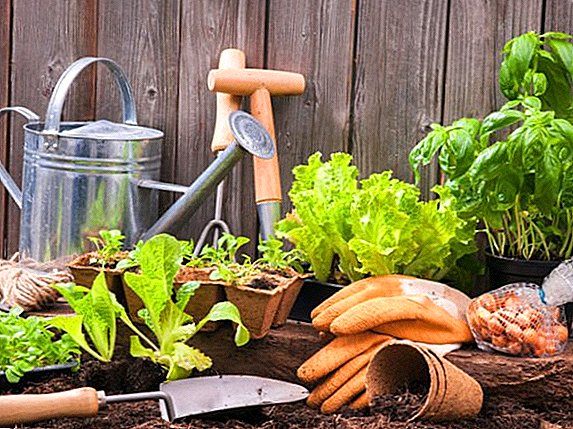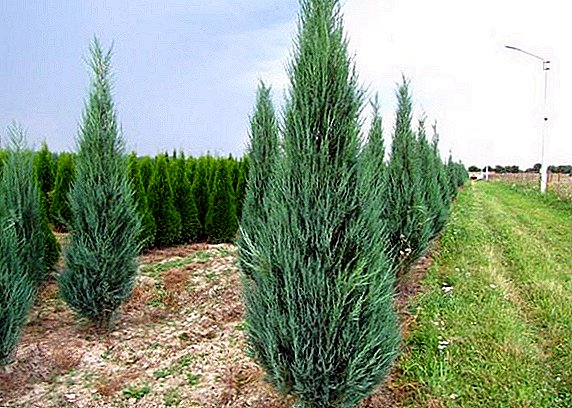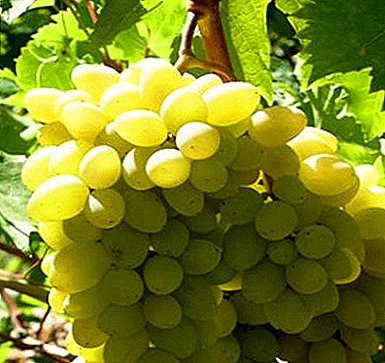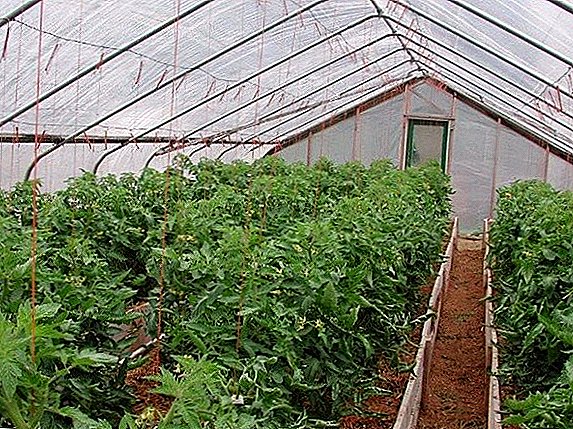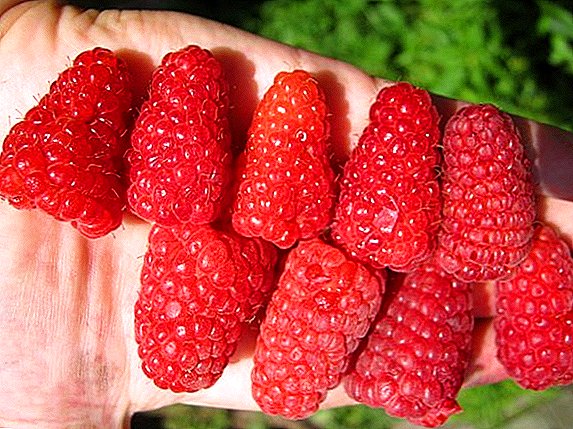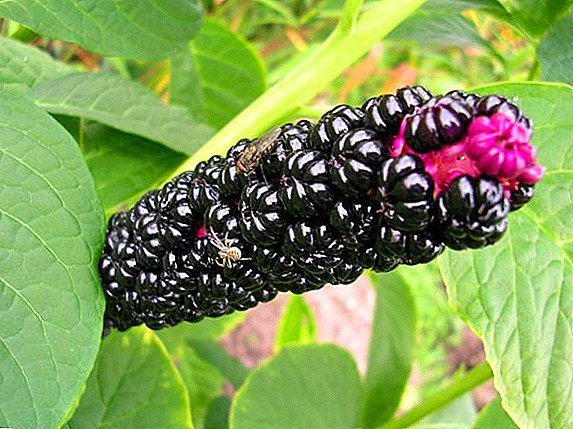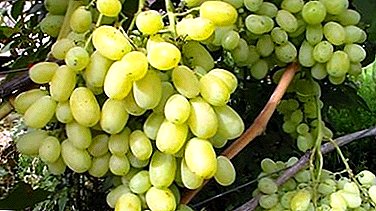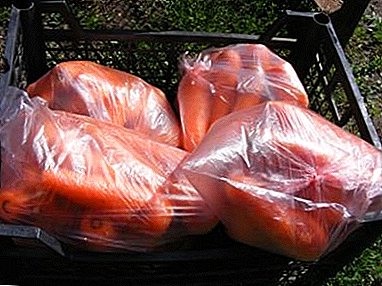
Root vegetables, such as beets and carrots, should be stored in such a way that they remain strong, healthy and sprout until they are consumed, otherwise, unfortunately, they will not have all their taste and health benefits.
Consider a new method that allows you to keep juiciness and freshness of vegetables - this is storage with plastic bags.
Getting acquainted with the orange beauty
Carrot (Latin. Daucus carota subsp. Sativus) is a biennial plant, a subspecies of the wild carrot species. Usually, in everyday life, by the word "carrot" we mean carrot sowing. They love her for a large, fleshy, juicy, orange root vegetable.
Today it is known to all that carrots - a useful vegetable, a real pantry of vitamins and nutrients needed by man. Carrots are used for cooking, as well as juices, various facial masks and much more. Women from all over the world exchange carrot-based recipes. In addition, people who eat carrots for a lifetime - live long.
 Vitamin A, which is found in carrots in quantities, is important for eye health. Carrots have a positive effect on immunity, help with diabetes, normalize the body's metabolism, help eliminate toxins and toxins, improve heart function, fight anemia and prevent the formation of tumors.
Vitamin A, which is found in carrots in quantities, is important for eye health. Carrots have a positive effect on immunity, help with diabetes, normalize the body's metabolism, help eliminate toxins and toxins, improve heart function, fight anemia and prevent the formation of tumors.
For the first time about carrots are mentioned about 2 thousand years BC. Homeland is the main varieties of the root is Afghanistan and the Mediterranean coast. Previously, carrots were grown not for eating, but for fragrant leaves and seeds. Currently, there are about 60 species of this useful plant, distributed throughout the world, from Europe and America to New Zealand and Australia.
How to choose a variety and determine the suitability of a vegetable?
We choose a variety of carrots suitable for storage. The best varieties of carrots for storage for the winter are considered:
- Chance.
- Mango F1.
- Nandrin F1.
- Nantes 4.
- Nerak F1.
- Rosal
- Typhoon.
- Nevis F1.
- Cyrano.
- Monanta
- Incomparable.
- Samson.
- Valeria.
- Gribovchanin F1.
- Shantane.
- Losinoostrovskaya.
- Canada F1.
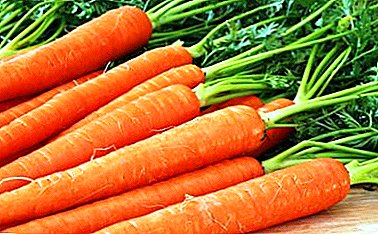 Vitamin
Vitamin- Nantejska and others.
- quite mature, bright orange, strong to the touch;
- have no signs of rot, diseases and other defects (for example, a hollowed out by a bear or incised carrots should not be stored);
- not too juicy and tender, because the harder the carrot, the better it will be.
- ease of laying (in the sand, for example, it is much more difficult to lay carrots for the winter);
- you can divide the harvest into portions and take with you a sachet each when you come to the cellar;
- bags of carrots can be carried and transported, unlike heavy sandboxes.
- It is important to monitor the temperature and humidity levels in the room. Increasing the temperature even by a few degrees can interrupt the "biological sleep" of carrots, and it will begin to germinate, wilt or ache.
- With this storage, white rot or sclerotinia is more likely to become infected.
- Wash carrots from the ground and set aside cracked and with other defects specimens.
- Put in vacuum bags, remove air.
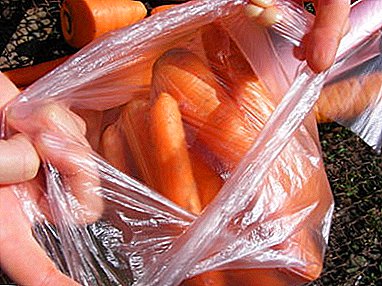 To wash or not to wash the collected carrots?
To wash or not to wash the collected carrots?It is better not to wash the carrots, so on the surface of the washed carrots, there remains a thin protective layer of earth that will help the root crop to be fresh longer.
- Plant
In some varieties, tops are weak and you can easily break it with your hands. If you have a variety with a powerful, bushy tops, it should be trimmed gently with a knife. And in the first and in the second case, try not to hurt the root itself. It is advisable not to break off and how to unscrew the tops, leaving the tip.
- Drying.
Our orange root vegetables need to be dried. It needs to be made for several hours before packing. Choose a place in the shade of trees in the fresh air, preferably in windy weather. At the same time for 1-2 days before storing the carrots should be cooled to a temperature of about 0 ° C.
- Cooking storage space.
Your cellar must meet the following conditions - it must be dry and it must maintain a temperature of + 4 ... + 12 degrees and a humidity of 90-95%. A warmer room is not suitable for storage: moisture will evaporate from the carrots, and the roots will shrivel and fade. How to keep carrots in a warm cellar, read in this article.
IMPORTANT! The temperature in the room should not fluctuate much. If necessary, you can pre-disinfect the storage and boxes with lime or copper sulfate. - Sorting of root crops.
Marry carrots with any flaws. Tainted carrots can be used when pickling cabbage.
- We lay in the container for storage.
You can choose any size of the bag - the usual food packaging, sugar bag for 10 kg, or large plastic bags of 30-35 kg (for more information on how to store carrots in sugar bags, it says here). The main thing is that the bag cannot be tied up, otherwise the planned loss of vegetables instead of 3-5% will be 100% within 15 days. In the open bag, the desired humidity is maintained.
- in sand;
- in sawdust;
- in the moss.
- Enumerate carrots and beets.
- Wash and dry.
- Lay half a packet of carrots, half of the beets.
- Packages are not tying to put close to each other.
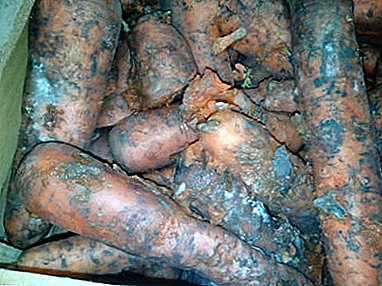 The appearance of rot from excessive moisture. This can be prevented if while laying carrots dip both of its ends into the ashes. Just next to the open bag filled with carrots you can put something that absorbs moisture - lime, newspapers, moss.
The appearance of rot from excessive moisture. This can be prevented if while laying carrots dip both of its ends into the ashes. Just next to the open bag filled with carrots you can put something that absorbs moisture - lime, newspapers, moss.- You will not be able to sort through the contents of a large bag to search for a spoiled carrot. To solve this problem, initially do not lay root crops in too large packages. Better if they are transparent.
All of them are middle-ripening and late-ripening varieties, they have oblong conical shape and hard pulp. Early ripening varieties are best used for making salads and pickling cabbage, or consumed raw immediately after having dug them out of the ground - they are not able to withstand months of storage.
How do gardeners advise best kept carrots, cleaned at the age of 100-110 days. However, even if the variety has been selected wisely and is suitable for winter storage, the growing conditions and freshness of the carrots in the cellar in winter may be affected by the growing conditions.
The most critical will be: poor type of soil, abundant watering, especially shortly before harvesting or the introduction of a large amount of nitrogen fertilizers.
Remember that moderation is the best advice for growing vegetables for winter storage.
When visually checking the carrot should be:
Vitamin non-hard varieties, in order to avoid their damage, eat first.
Thirdly, cleaning carrots for storage should occur in dry, good weather. And a week before cleaning, you must stop watering.
Is it possible to leave the cellar and how best?
 Carrots before the appearance of refrigerators stored in the cellars. However, then there was no plastic bags. Today, many craftsmen store carrots in large packages in their basements., of course, following certain rules, because the cellar is wet enough, and it threatens the storage of carrots.
Carrots before the appearance of refrigerators stored in the cellars. However, then there was no plastic bags. Today, many craftsmen store carrots in large packages in their basements., of course, following certain rules, because the cellar is wet enough, and it threatens the storage of carrots.
Of course, in the conditions of big cities, storage in the cellar is almost impossible, so this method of storage is for those lucky people who have a cellar or a cellar at their disposal.
Features
Among the advantages of storage in packages are the following:
Minuses:
Training
To prepare for storage, you must have a knife, plastic bags, a cellar, and clean, healthy carrots. Also, to eliminate the moisture may need moss, ash, newspapers, lime.
You will also need to clear a place on the street where you will dry the carrots, preferably on the grates.
How to keep plastic bags in the subfield?
How to store in packages?
In vacuum
With this method, carrots will not be stored for long - a few weeksas she is alive and she needs to breathe. If the carrots are crushed and thermally processed, then in vacuum bags, it will remain much better.
In cellophane
Carrots emit carbon dioxide during storage. In open bags it accumulates a little, and it prevents the development of diseases. However, in tied bags, its concentration will be high and the carrot will deteriorate.
Learn how to store carrots in plastic bags, you can also in this video:
With beetroot
Possible problems
We have given you simple instructions in order to try out such a new and modern way of storage as storage in plastic bags, including vacuum bags. In order to enjoy the carrots in their own hands in the winter, they must follow these rules. After all its carrot does not go to any comparison with the store. Keep healthy this tasty vegetable.


 Vitamin
Vitamin To wash or not to wash the collected carrots?
To wash or not to wash the collected carrots? The appearance of rot from excessive moisture. This can be prevented if while laying carrots dip both of its ends into the ashes. Just next to the open bag filled with carrots you can put something that absorbs moisture - lime, newspapers, moss.
The appearance of rot from excessive moisture. This can be prevented if while laying carrots dip both of its ends into the ashes. Just next to the open bag filled with carrots you can put something that absorbs moisture - lime, newspapers, moss.